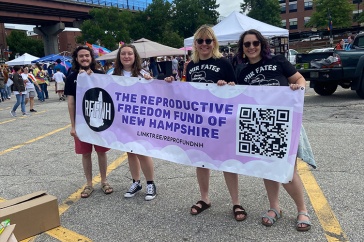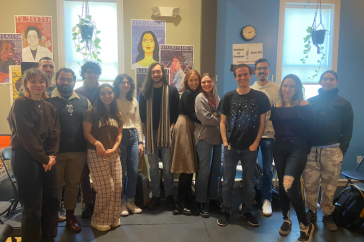Race. Inclusion. Equity. They’re terms that resonate across college campuses as students, faculty and staff strive to embrace diversity and foster inclusivity. But what about reaching students who are in elementary school or are even younger? At UNH, an innovative project has brought together resources from the Community Literacy Center (CLC) and education department to teach the future teachers who will soon be shaping young minds in New Hampshire and beyond.

Bethany Silva, research assistant professor of education and director of UNH’s CLC, and assistant professor of education Elyse Hambacher are involved in teaching and research aimed at helping pre-service teachers become more comfortable with a key movement in children’s literature called We Need Diverse Books.
“Recent events in New Hampshire have highlighted the importance of classroom conversations focused on race and equity. However, white people are often reluctant to talk about race because of a lack of familiarity with the subject,” Silva explains.
That plays directly into the question Hambacher and Silva are trying to answer: “In a predominantly white state like New Hampshire, with a teaching force that is predominantly white, how might that reluctance play out in the classroom, and how can the CLC and teacher educators help to prepare teachers to engage in important conversations with their students?”
To those ends, UNH students in Hambacher’s Exploring Teaching course prepared a three-week special series for the CLC’s afterschool program called Book->Art that focuses on literature that highlights social justice issues. UNH partners with local schools in districts including Dover and Oyster River as well as home-schooled students for this afterschool program.
“In addition to the importance of needing diverse books, the collaboration with the CLC and my course is to support teacher development around teaching for social justice,” Hambacher explains. “In other words, having diverse books is important. Just as important, and perhaps more so, is how we teach aspiring teachers to use these books to facilitate discussions about social injustice.”
“Elyse and I have talked a lot about how to support the work so that her students feel confident taking on topics that often cause discomfort,” Silva adds. “They’re all interested in engaging in these kinds of conversations, but the more they plan, the more they realize that they’ve never theoretically thought out how they might do so with children before. For example, one group said to me, ‘How do you explain what a refugee is to a child without getting too dark?’”
What Hambacher’s students are learning promises to enrich their ability to educate students in the classroom.

“I'm really grateful that I participated in this project,” says Grace Morelli ’21 of Shrewsbury, Massachusetts. Based on what she learned in Book->Art, she adds, “I'm going to try and implement it in my class when I become a teacher.”
Natalie Laurendeau ‘21 of Bedford, New Hampshire, agrees.
“Book->Art provided me with an experience that I otherwise would have never gotten as an undergrad,” Laurendeau says. “Not only did it allow me to create and execute my own lesson plan, but it pushed me to find a way to teach sensitive social justice issues to a younger crowd. To my surprise, the kids really understood the lesson that we were driving through and were extremely respectful when discussing social justice.”
As part of the class and in support of their research into how best to teach the teachers, Hambacher and Silva analyze the reflections of the pre-service teachers on what it means to teach critically, what they did and why, how their lessons went and what they learned from the experience.
“We are relying on qualitative research methods including a document analysis of the lesson plans they submitted as well as written pre-reflections and post-reflections of their lesson plan,” Hambacher says, noting they also video-recorded each lesson plan to better understand each student’s process.
Looking toward the future, Hambacher and Silva hope to gain insight into the challenges aspiring teachers encounter using social justice-oriented children’s literature to facilitate discussions about inequity.
For Laurendeau and Morelli, this experience made an impact on what they hope to accomplish as teachers.
“Tying social justice literature into the classroom has given me a different perspective on teaching.” Morelli says.
Laurendeau agrees. “Throughout this experience, I have learned that children are never too young to learn about social justice,” she says. “Of course, the way we talk about the issues will need to be modified, but it is important that these children are immersed in these issues at a young age because it teaches them how to be respectful of everyone and embrace diversity.”
Interested in exploring a teaching career? Find out more about UNH's education department.
-
Written By:
Jennifer Saunders | Communications and Public Affairs | jennifer.saunders@unh.edu | 603-862-3585



















































